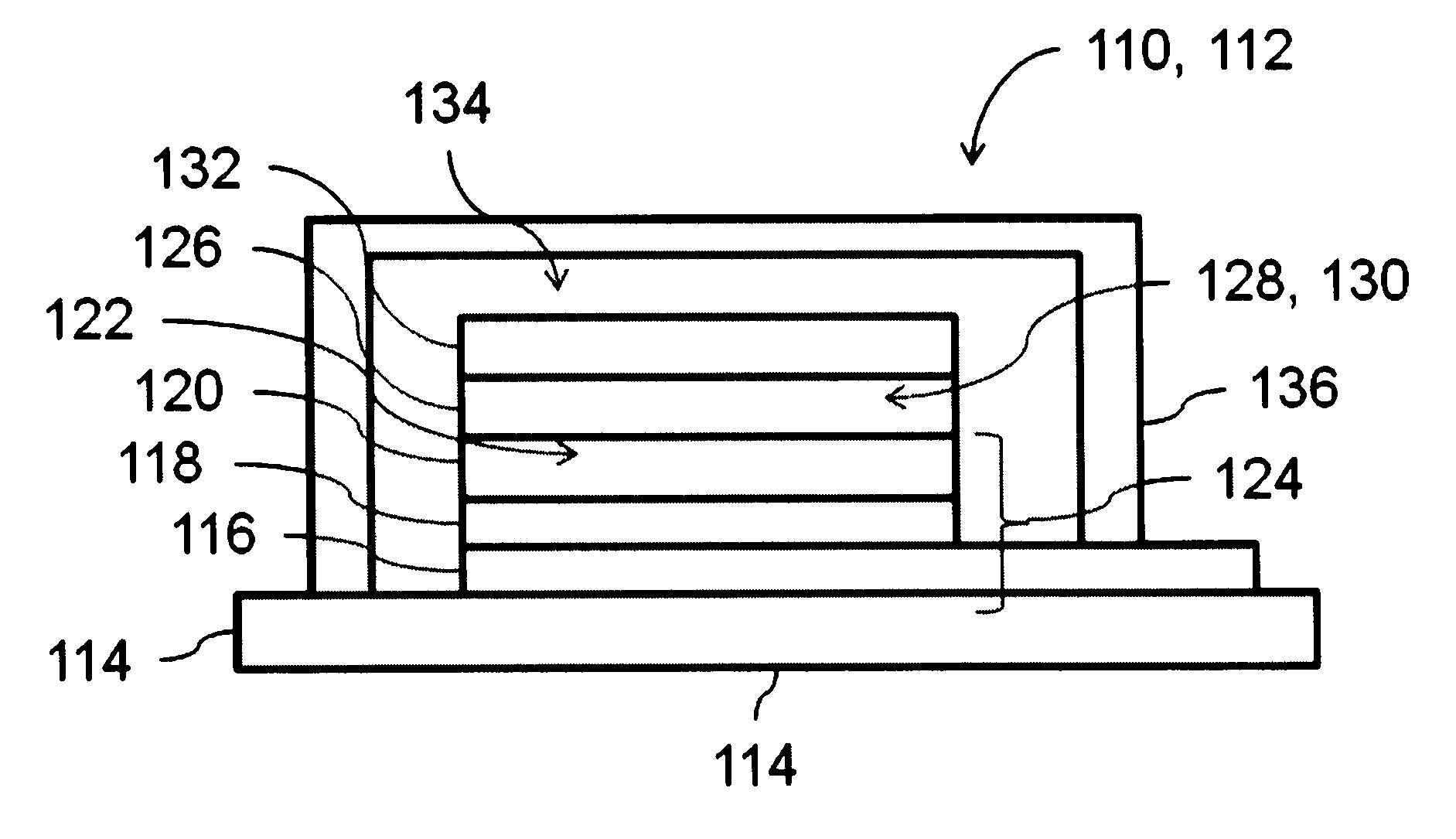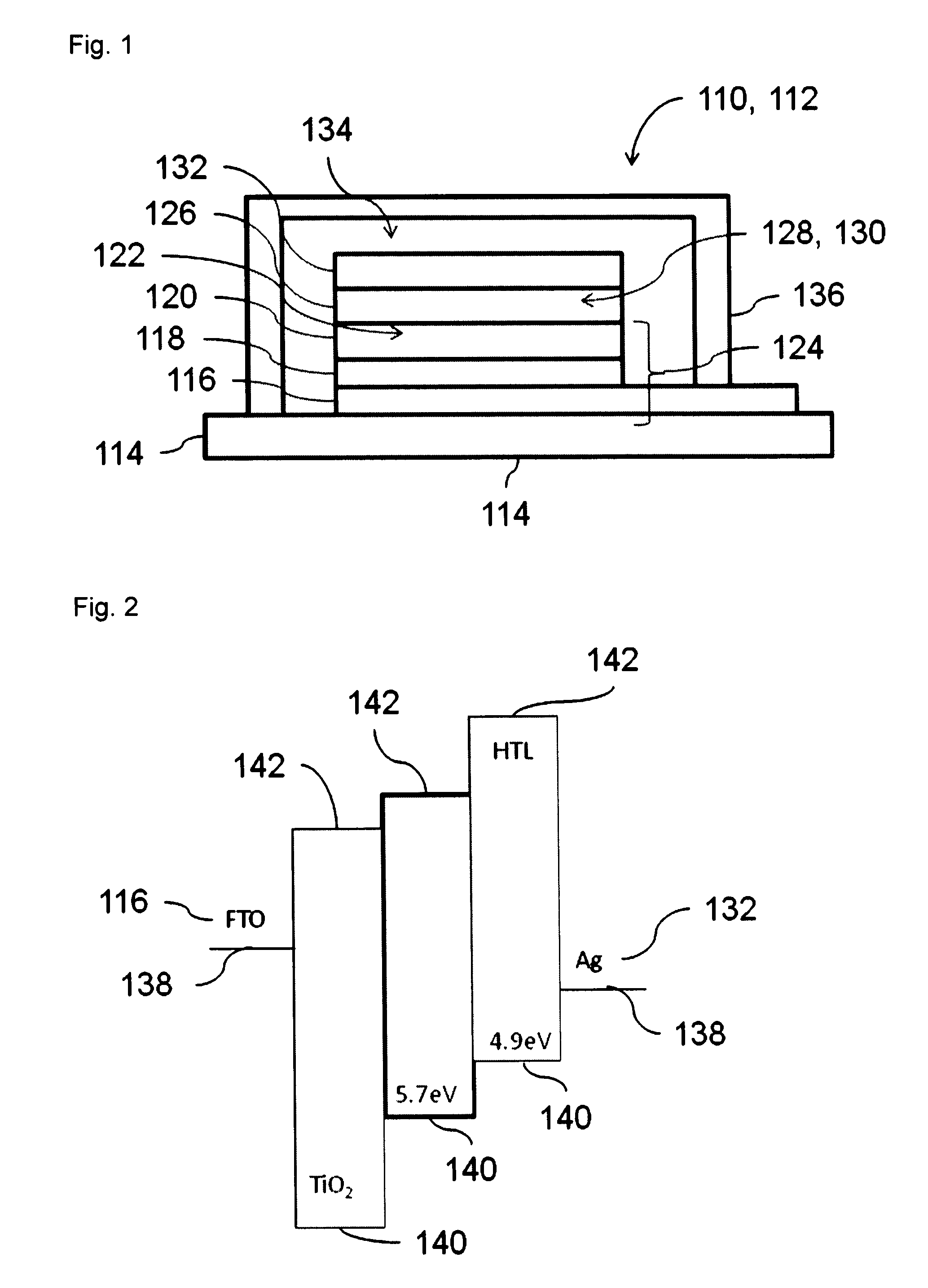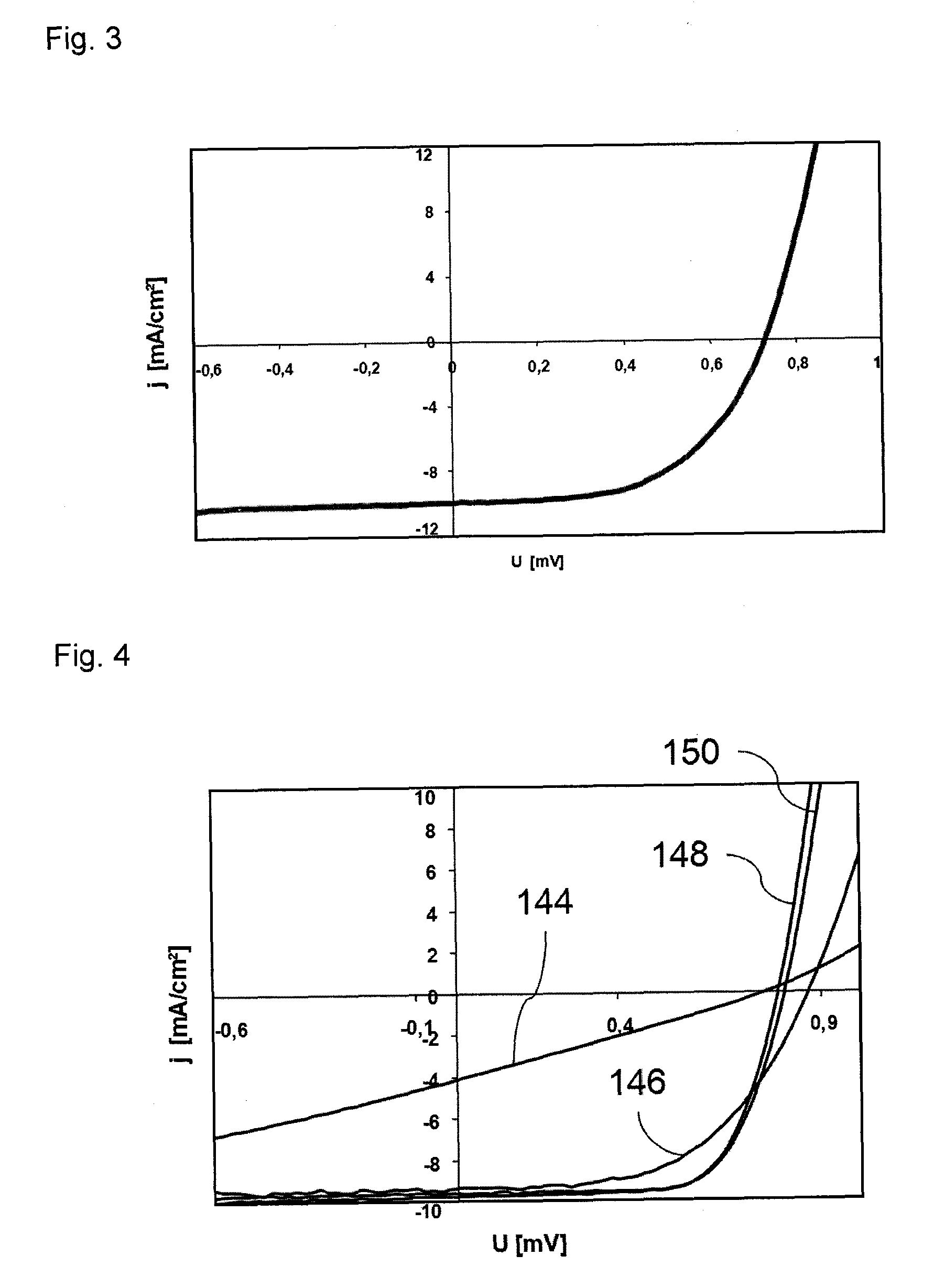Dye solar cell with improved stability
- Summary
- Abstract
- Description
- Claims
- Application Information
AI Technical Summary
Benefits of technology
Problems solved by technology
Method used
Image
Examples
example 1
V2O5 in Chlorobenzene
[0145]As the first working example of an inventive photovoltaic element, the above-described comparative sample was modified by doping the p-semiconductor with vanadium pentoxide, using chlorobenzene as a solvent.
[0146]The base material, the preparation thereof, the production of the optional solid TiO2 buffer layer, the production of the layer of the n-semiconductive metal oxide and the dye sensitization were effected as for the production of the comparative sample.
[0147]Next, a p-semiconductor solution was spun on in a glovebox with inert atmosphere. For this purpose, a 0.16 M spiro-MeOTAD (Lumtec) in chlorobenzene p.A. (Sigma-Aldrich) was made up. This was brought into solution in a screwtop bottle at approx. 80° C. on a hotplate. After cooling to room temperature, a 20 mmolar LiN(SO2CF3)2 solution in cyclohexanone (hole conductor:lithium salt ratio 33:4) was added to the solution. The addition of lithium salt was followed by a wait time of 3 minutes. The spi...
examples 2 to 41
Variations of the Metal Oxides and of the Solvents
[0152]Analogously to example 1, further examples of photovoltaic elements were produced, with modification of the metal oxide used and / or the solvent in which the p-semiconductor was dissolved, with respect to example 1.
[0153]The production was in principle effected analogously to the above description of example 1. Again, spiro-MeOTAD (Lumtec) was used in each case in a 0.16 M solution, except that the solvents of this solution were varied. Analogously to example 1, the solutions were each brought completely into solution in screwtop bottles at approx. 80° C. on a hotplate. After cooling to room temperature, a 20 mmolar LiN(SO2CF3)2 solution in cyclohexanone (hole conductor:lithium salt ratio 33:4) was again added to the solution. The addition of lithium salt was again followed by a wait time of 3 minutes. Subsequently, in each example, 2.5% of the particular metal oxide in each case, again based on the proportion by weight of the p...
synthesis examples
Synthesis of Compounds of the Formula I
A) Syntheses:
Synthesis Route I:
Synthesis Step I-R1:
[0199]
[0200]The synthesis in synthesis step I-R1 was based on the references cited below:[0201]a) Liu, Yunqi; Ma, Hong; Jen, Alex K-Y.; CHCOFS; Chem. Commun.; 24; 1998; 2747-2748,[0202]b) Goodson, Felix E.; Hauck, Sheila; Hartwig, John F.; J. Am. Chem. Soc.; 121; 33; 1999; 7527-7539,[0203]c) Shen, Jiun Yi; Lee, Chung Ying; Huang, Tai-Hsiang; Lin, Jiann T.; Tao, Yu-Tai; Chien, Chin-Hsiung; Tsai, Chiitang; J. Mater. Chem.; 15; 25; 2005; 2455-2463,[0204]d) Huang, Ping-Hsin; Shen, Jiun-Yi; Pu, Shin-Chien; Wen, Yuh-Sheng; Lin, Jiann T.; Chou, Pi-Tai; Yeh, Ming-Chang P.; J. Mater. Chem.; 16; 9; 2006; 850-857,[0205]e) Hirata, Narukuni; Kroeze, Jessica E.; Park, Taiho; Jones, David; Hague, Saif A.; Holmes, Andrew B.; Durrant, James R.; Chem. Commun.; 5; 2006; 535-537.
Synthesis Step I-R2:
[0206]
[0207]The synthesis in synthesis step I-R2 was based on the references cited below:[0208]a) Huang, Qinglan; Evm...
PUM
 Login to View More
Login to View More Abstract
Description
Claims
Application Information
 Login to View More
Login to View More - R&D
- Intellectual Property
- Life Sciences
- Materials
- Tech Scout
- Unparalleled Data Quality
- Higher Quality Content
- 60% Fewer Hallucinations
Browse by: Latest US Patents, China's latest patents, Technical Efficacy Thesaurus, Application Domain, Technology Topic, Popular Technical Reports.
© 2025 PatSnap. All rights reserved.Legal|Privacy policy|Modern Slavery Act Transparency Statement|Sitemap|About US| Contact US: help@patsnap.com



